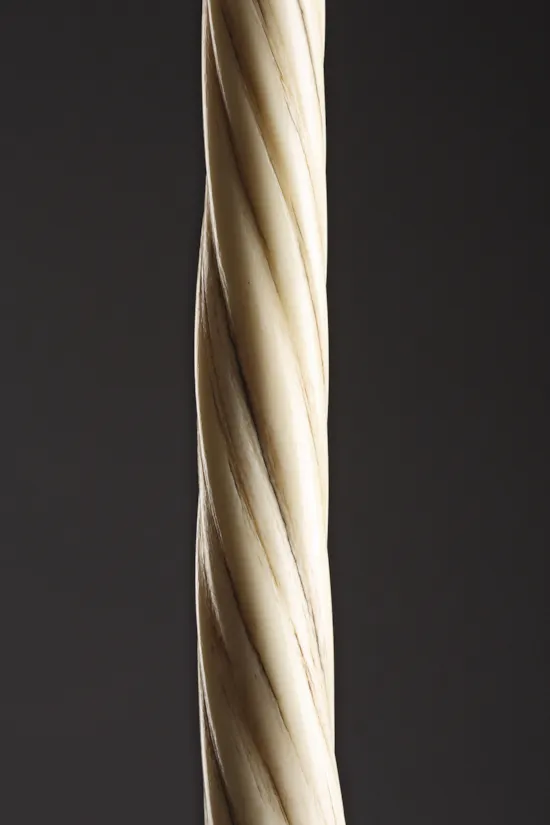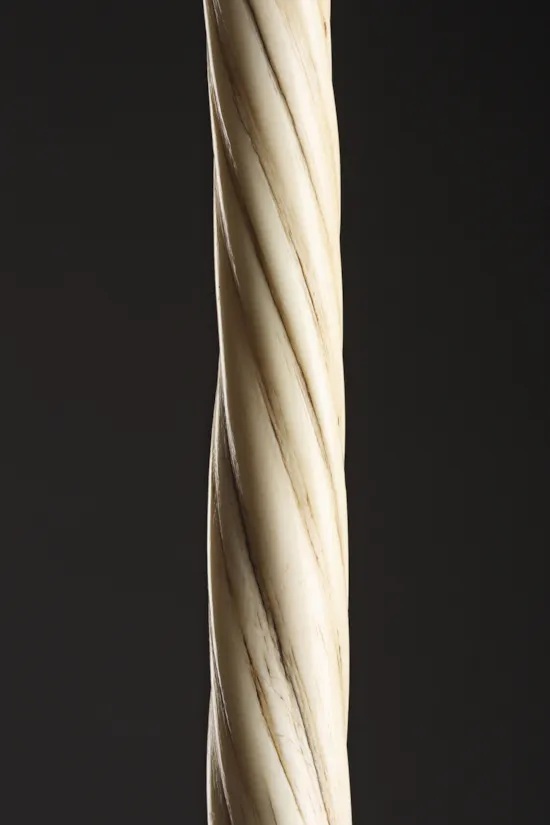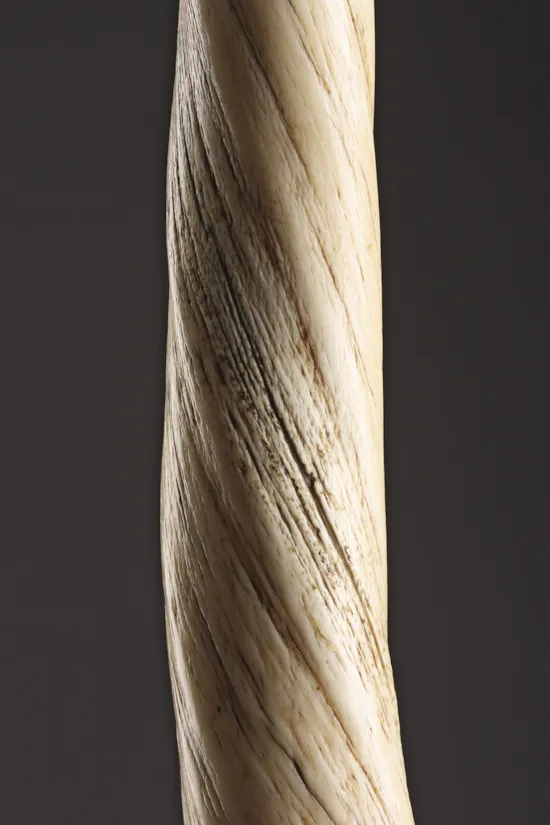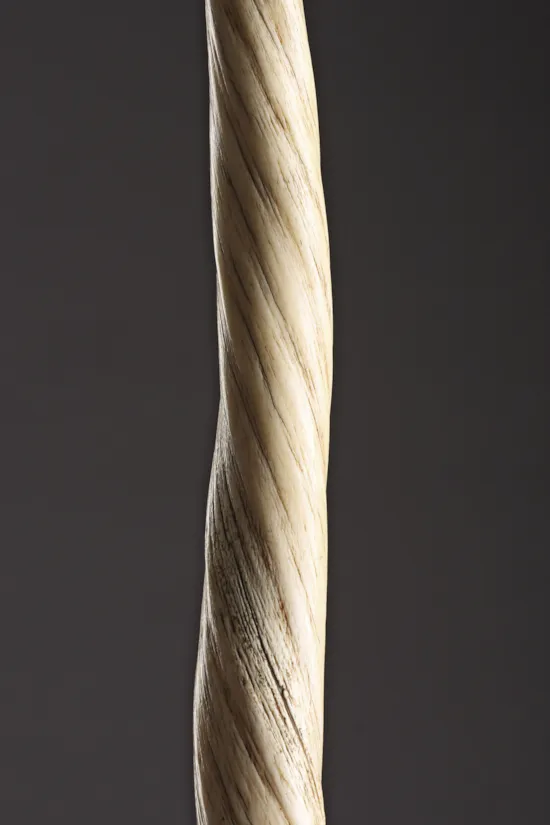Fine Antique Specimen of a Narwhal Tusk ‘Monodon Monoceros’
This item is now SOLD
NARWHAL Tusks: Since late Janaury 2025 the sale within the UK of Narwhal tusks has been banned.
Along with Ivory, it maybe possible for exceptional and rare examples to be sold with an exemption permit, depending on the indivudal exceptional circumstances of each tusk ? i.e age (medieval ?) length, exceptional size ? carved decoration etc. ? (please enquire for full details)
Finch and Co would be happy to advise.
NARWHAL Tusks: Since late Janaury 2025 the sale within the UK of Narwhal tusks has been banned.
Along with Ivory, it maybe possible for exceptional and rare examples to be sold with an exemption permit, depending on the indivudal exceptional circumstances of each tusk ? i.e age (medieval ?) length, exceptional size ? carved decoration etc. ? (please enquire for full details)
Finch and Co would be happy to advise.
A Fine Antique Specimen of a Narwhal Tusk ‘Monodon Monoceros’
18th – early 19th Century
Size: 199cm high – 78¼ ins high
212cm high – 83½ ins high (with stand)
C.I.T.E.S article 10 certificate is available
This example has been sold priro to 2025
NARWHAL Tusks: Since late Janaury 2025 the sale within the UK of Narwhal tusks has been banned.
Along with Ivory, it maybe possible for exceptional and rare examples to be sold with an exemption permit, depending on the indivudal exceptional circumstances of each tusk ? i.e age (medieval ?) length, exceptional size ? carved decoration etc. ? (please enquire for full details)
Finch and Co would be happy to advise.
18th – early 19th Century
Size: 199cm high – 78¼ ins high
212cm high – 83½ ins high (with stand)
C.I.T.E.S article 10 certificate is available
This example has been sold priro to 2025
NARWHAL Tusks: Since late Janaury 2025 the sale within the UK of Narwhal tusks has been banned.
Along with Ivory, it maybe possible for exceptional and rare examples to be sold with an exemption permit, depending on the indivudal exceptional circumstances of each tusk ? i.e age (medieval ?) length, exceptional size ? carved decoration etc. ? (please enquire for full details)
Finch and Co would be happy to advise.
In medieval times the Narwhal was known as the 'unicorn of the sea' and remains today one of the most curious and interesting of all the toothed whales. They inhabit the Arctic seas and are often found in the company of Belugas, their closest relatives. Adult males measure from 12 to 16 feet long, the females are somewhat smaller. The adults are a pale, mottled, grey white colour, but the young are quite dark sometimes an almost shiny black.
The long spiral upper tooth juts forward 8 or 9 feet from the left side of the males upper jaw and this ivory lance like tusk was believed to be the mythical unicorn's horn and thus to have special and wonderful qualities. Indeed Alexander Woodson of Bristol, a prominent 16th century physician tested the ivory and... ‘found it soveraigne against poyson as any unicornes horne’. Narwhal tusks became precious and highly valuable commodities, the gifts of Kings and the prized possessions of royalty. In 1561 the Countess of Bath bequeathed to her daughter Dame Elizabeth Kytson ‘her caskanet of pearls, with the flower of diamonds ….. and her unicorns (horn)’.
The long spiral upper tooth juts forward 8 or 9 feet from the left side of the males upper jaw and this ivory lance like tusk was believed to be the mythical unicorn's horn and thus to have special and wonderful qualities. Indeed Alexander Woodson of Bristol, a prominent 16th century physician tested the ivory and... ‘found it soveraigne against poyson as any unicornes horne’. Narwhal tusks became precious and highly valuable commodities, the gifts of Kings and the prized possessions of royalty. In 1561 the Countess of Bath bequeathed to her daughter Dame Elizabeth Kytson ‘her caskanet of pearls, with the flower of diamonds ….. and her unicorns (horn)’.
NARWHAL Tusks: Since late Janaury 2025 the sale within the UK of Narwhal tusks has been banned.
Along with Ivory, it maybe possible for exceptional and rare examples to be sold with an exemption permit, depending on the indivudal exceptional circumstances of each tusk ? i.e age (medieval ?) length, exceptional size ? carved decoration etc. ? (please enquire for full details)
Finch and Co would be happy to advise.
Along with Ivory, it maybe possible for exceptional and rare examples to be sold with an exemption permit, depending on the indivudal exceptional circumstances of each tusk ? i.e age (medieval ?) length, exceptional size ? carved decoration etc. ? (please enquire for full details)
Finch and Co would be happy to advise.
NARWHAL Tusks: Since late Janaury 2025 the sale within the UK of Narwhal tusks has been banned.
Along with Ivory, it maybe possible for exceptional and rare examples to be sold with an exemption permit, depending on the indivudal exceptional circumstances of each tusk ? i.e age (medieval ?) length, exceptional size ? carved decoration etc. ? (please enquire for full details)
Finch and Co would be happy to advise.
Along with Ivory, it maybe possible for exceptional and rare examples to be sold with an exemption permit, depending on the indivudal exceptional circumstances of each tusk ? i.e age (medieval ?) length, exceptional size ? carved decoration etc. ? (please enquire for full details)
Finch and Co would be happy to advise.
Fine Antique Specimen of a Narwhal Tusk ‘Monodon Monoceros’
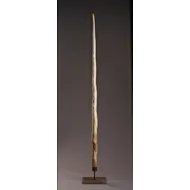
SOLD
